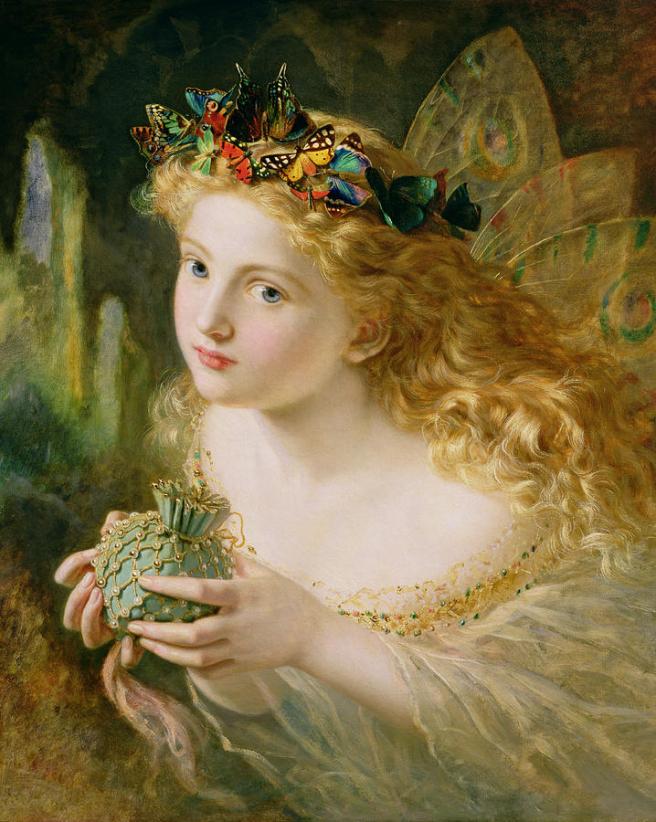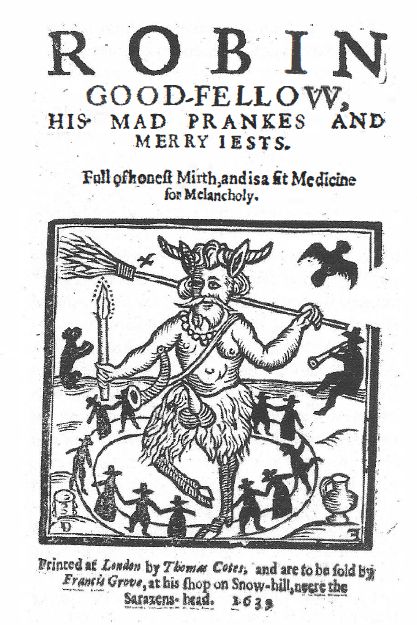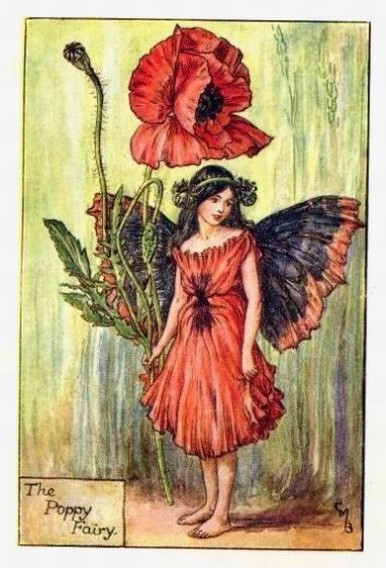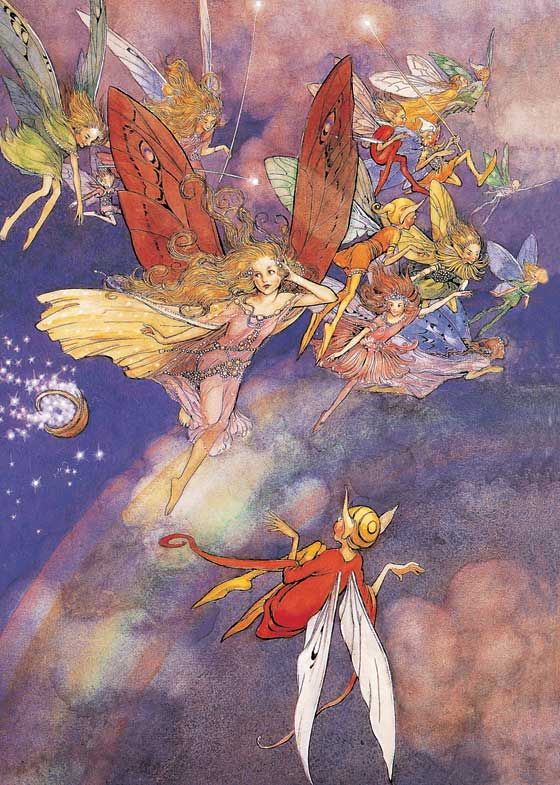
‘Take the fair face of woman,’ Sophie Anderson
“It was late on an eve in midsummer,
I fell sleeping on the green,
And when I awoke in wonder, I saw
What few mortal men have seen.
Changelings, fays and sprites,
A mighty swarm, all had taken to the air,
And before them passed their Fairy Queen,
She.. the fairest of the fair…”
(from He who would dream of fairyland, by Micheal Patrick Hearn)
I posted not too long ago a comment upon the convention of fairies’ pointy ears, in response to an examination of the question by Morgan Daimler. I thought more about it, and about conceptions of fairy beauty in general, and decided to review our evolving iconography on this subject. I have written about fairy physiology, their height and physical form, but I had neglected to discuss that most obvious of features, their faces!
Fairies in folklore
For centuries humans have found the physical charms of fairy men and women irresistible. Whether it is the many alluring fairy queens of whom we read in medieval romances, the Irish leanan sidhe and her male counterpart gean canach, or long-haired mermaids on the shore, all are so desirable that we would abandon all we know to be with a fairy lover. Fae beauty is said to exceed that of humans- this is the case with the elf-wife of Wild Edric in the twelfth century story of his fate; the same was the case in Wales in the accounts of the lake maidens and the girls of the tylwyth teg (the fair family) who lured men into their dances (Rhys, Celtic folklore, pp.3, 23 & 44 and pp.85-6 & 90 respectively).
Overall, the folklore evidence seems to be that there were types of fairy known to be ugly or deformed- spinner Habetrot‘s distended bottom lip, misshapen through years of pulling thread- springs to mind; and then there were the rest of the elves and fairies, whose features were at least unremarkable or normal and, not infrequently, surpassing human looks. The fays might be shorter in stature than us, but they were not regarded as any less fair. Mentions of some repulsive feature- an extra-long tooth or a malformed nose- do not seem to include pointed ears. Also largely lacking from the folklore of Britain and Ireland is the combination of beauty and deformity that is found in the Danish elle-maids, who may have gorgeous faces but hollow backs or cows’ tails. The only British example of this type I can bring to mind is the Highland glaistig, a lovely woman who wears a long green dress- that conceals her hooved feet.
Goblins in art
The folklore dichotomy between ‘fair’ and ‘foul’ fairy types is found in our visual arts too.

Cover of a seventeenth century chapbook
Popular depictions of fairies date right back to the sixteenth century and certain conventions were fixed even then. One type of fairy consistently found is the hairy Puck-like creature- also known as Robin Goodfellow. He derives substantially from classical images of the satyr, often with horns and with the pointed ears of a goat.

This image stayed with us for centuries. Although we may later have spoken about goblins, possibly even elves, the way they were represented stayed very much the same: they were ugly, if not grotesque, and only partially human. There are many examples, such as in pictures of Shakespeare’s character Puck by Sir Joshua Reynolds or Henry Fuseli or in paintings of other scenes from Midsummer night’s dream, for instance, The reconciliation of Oberon and Titania or Oberon and the mermaid, both by Sir Noel Paton.

John Simmons, A fairy lying on a leaf
Nubile fairies
The second strand in our art also, I feel sure, derives ultimately from classical art. In contrast to those satyrs and fauns, the Greeks envisaged naiads, dryads and other nymphs. They were almost always young, naked women, and later British art- especially in the Victorian period- is full of nude nubiles with long hair. These are the young females who sprout wings and acquire wands during the nineteenth century. As I’ve suggested in a discussion of fairies on the stage and in art, this honouring of classical models may also have been an excuse to produce a little soft porn for the consumer art market, but it was all very tastefully done.

Arthur Rackham, ‘Fairy song,’ illustration to A midsummer night’s dream.
For some time these two fairy types were held apart, so that the females were pretty and petite and indisputably human, whilst the elves, goblins (and later pixies) had some distinguishing feature that clearly denoted their otherness- often it was the ears, although they could be simply oversized (as in the work of Hutton Lear), or bat-like (Paton, Reconciliation of Oberon and Titania). Sometimes the heads and bodies might be misshapen, for example by being exaggeratedly rounded. Arthur Rackham’s work typifies these contrasting poles, as shown in the example below, ‘These fairy mountains.’ At the same time, though, we start to see in some of Rackham’s work an amalgamation of the two types, as in Fairy song above.

It’s not always easy to be sure about the physical characteristics of the fairies, either because the maidens have abundant locks or because (in the case of John Anster Fitzgerald) they wear odd, close fitting hats and caps. That said, it is quite common for those hats to be strangely shaped, with flaps and points much resembling animal ears (Richard Dadd is another example of this style). We should also note the paintings of Henry Fuseli, whose fairies are women, it’s quite true, but whose faces are often sharp and caricatured, sometimes with disturbingly black eyes.
Flower fairies
By and large, though, the two distinct strains of fairy representation remained separate until the twentieth century. What then followed was huge popularity of the ‘flower fairy‘ and, as many readers will know, there was nothing in the least supernatural or alarming about the creatures drawn by Margaret Tarrant and Cicely Mary Barker. The riot of Victorian nudes disappeared to be replaced by nice demure little girls from Croydon with bobbed 1920s hair and pretty party frocks (Ida Rentoul Outhwaite in Australia is another exemplar of this genre). Meanwhile, the pixies and goblins perhaps became a little quainter and less wicked as children’s book illustration increasingly became the venue for fairy art (see, for example, the work of Rosa Petherick- amongst many).

Cicely Mary Barker, The poppy flower fairy
Modern fairies
I think it is only much later in the twentieth century that elements of the ‘Puck’ seeped into the drawing of the ‘fairy’ to give us the elves we’d instantly recognise today. When English artists Alan Lee and Brian Froud drew their celebrated Faeries in 1978 they gave pointed ears to all the fays they drew. Indisputably, the illustrations in this book (and its many successors) have been extraordinarily influential upon subsequent popular conceptions.
There’s nothing in Tolkien’s books about pointed ears (whether on the hobbits or on the notedly handsome elves) which could form a link in this chain of influence. In fact, setting aside Tarrant and Barker (despite the huge and continuing popularity of their work) I think that it is other children’s illustrators of the mid-twentieth century who form the iconographic link between artists of the 1960s and ’70s and the Victorian antecedents. In the innumerable illustrations for children’s books showing fairies, elves and pixies, we witness the final merging of the lovely female fairy and the cute pixy. There are considerable numbers of these- too many to enumerate here- but as examples I will mention Gladys Checkley, Helen Jacobs and Rene Cloke, all of whose pictures will have introduced young children from the 1930s through to the 1960s to the idea of diminutive, dragonfly-winged fairies with pointed ears. From these pictures it was a very short step to Galadriel and Legolas as we unavoidably envisage them today.

Helen Jacobs, A fleet of fairies

Gladys Checkley postcard (c.1950)
Further reading
Ideals of fairy beauty (and of sexuality, which tends, inseparably, to be connected to this) are matters I have discussed several times before. I have compared the work of Rackham and Froud and I have examined our evolving representations of fairy age and gender.
One again a brilliant and thoroughly researched piece, throughout I was reminded of that poem ‘The Brownie of Blednoch’ and the horrific description of Aiken Drum, which was a strange contrast to his harmless personality
LikeLike
An eldritch look indeed, with a hole where his nose should be..! And a wise comment, perhaps, on not judging by looks alone. Thanks for the compliment and the encouragement, too.
LikeLiked by 1 person